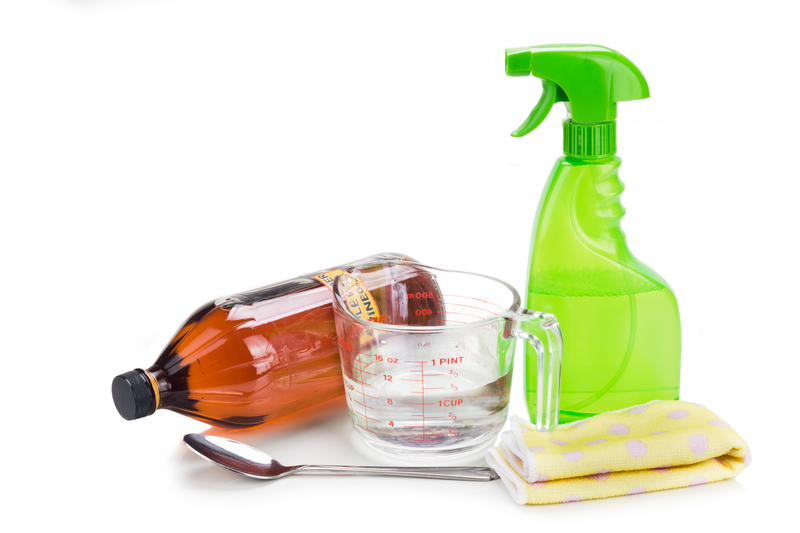Secrets Unveiled: Preventing Sofa Cover Damage in the Wash
Posted on 15/09/2025
Secrets Unveiled: Preventing Sofa Cover Damage in the Wash
Sofa covers offer a practical solution for keeping your furniture fresh and stylish, but washing them improperly can lead to shrinkage, fading, tearing, or even permanent damage. Whether your covers are crafted from delicate linen, resilient cotton, or opulent velvet, the methods you use to clean them can make or break their longevity. In this comprehensive guide, we reveal expert secrets and professional tips for preventing sofa cover damage in the wash.

Why Sofa Cover Care Matters: The Foundation of Long-Lasting Sofas
The way you clean your sofa covers determines not only their visual appeal but also their durability. Improper washing can cause:
- Shrinkage - causing covers to no longer fit your sofa
- Color Fading - resulting in a dull, worn-out look
- Seam Damage or Fraying - reducing the life of the cover
- Stubborn Wrinkles - difficult to remove once set
Understanding the right way to wash your furniture covers not only preserves their beauty but also saves money on replacements. Let's dive deep into practical steps for protecting your sofa covers during washing.
Decoding the Care Labels: The First Line of Defense
If you're wondering how to prevent sofa cover damage in the wash, always begin with the care label. These labels hold essential information:
- Material type (cotton, polyester, velvet, linen, etc.)
- Instructions (machine-washable, hand-wash only, dry-clean, etc.)
- Recommended temperature and drying method
Never ignore these instructions--each fabric type has unique requirements. When in doubt, consult the manufacturer's website for additional advice.
Pro Tip:
If your cover doesn't have a label, test a small, hidden area with water and detergent to see how the material reacts.
The Golden Rules for Washing Sofa Covers Safely
The secret to keeping your sofa covers pristine largely comes down to following these best practices:
1. Vacuum Before Washing
Remove dust, debris, and pet hair by vacuuming your covers. Dirt can act as an abrasive during washing, wearing out the fabric prematurely.
2. Pre-Treat Stains Properly
Before tossing covers in the wash, spot-treat stains using a gentle detergent or a specialty upholstery cleaner. Gently blot (do not rub) and allow the solution to sit for a few minutes.
3. Close All Zippers and Fastenings
Zipped-up covers maintain their shape and prevent snagging during the wash cycle. Fasten Velcro or buttons, too.
4. Use Cold or Lukewarm Water
Hot water is a leading cause of shrinkage and color fading. For most fabrics, stick to cold or lukewarm settings.
5. Wash on a Gentle Cycle
Choose a delicate or gentle cycle on your washing machine, and ensure the load isn't overcrowded to allow thorough yet soft cleaning.
6. Choose Mild Detergents
Avoid harsh chemicals and bleach. Instead, opt for a mild, color-safe detergent designed for delicates. This reduces the risk of fabric breakdown and discoloration.
7. Avoid Fabric Softeners if Not Recommended
Certain materials, such as microfiber or performance fabrics, can lose their texture or protective coatings with the use of fabric softeners.
Hand-Washing vs. Machine-Washing: When and Why?
Hand-washing is often the safest way to prevent furniture cover damage, especially for delicate or non-colorfast materials. It allows you to control the agitation, temperature, and duration. However, many covers can safely be machine-washed provided the right settings are chosen.
- Hand-wash: Silk, velvet, embellished, or antique covers
- Machine-wash: Sturdy cotton, polyester, and blends
Always err on the side of caution if you are unsure about your cover's washing tolerance.
Drying Dilemmas: Preventing Shrinkage and Warping
How you dry your sofa covers can be just as critical as the washing process. Here's what experts recommend:
1. Air-Dry Whenever Possible
- Lay covers flat on a clean towel or drying rack to maintain their shape.
- Avoid direct sunlight, as it can cause fading.
2. If Using a Dryer, Opt for Low or No Heat
- Dry on the lowest possible heat setting.
- Remove covers while still slightly damp and air-dry to finish.
3. Avoid Overdrying
- Overdrying can lead to shrinkage and brittle fabric.
- Check the covers regularly during the drying cycle.
Ironing and Refitting: Tips for a Perfect Finish
If your covers come out wrinkled, iron them on the appropriate setting (refer to care label instructions). Use a damp cloth between the iron and the fabric to prevent scorch marks.
- For stretch covers: Fit them back onto the sofa while slightly damp for a smoother, tighter finish.
- For tailored covers: Ensure complete dryness before refitting to prevent mold and odor.
Extra Care for Special Fabrics
1. Velvet Sofa Covers
Velvet requires special attention to prevent pile crushing and loss of sheen. Use only specialized velvet cleaners or hand-wash with cold water and minimal agitation. Air-dry on a padded surface and brush gently when dry.
2. Linen Sofa Covers
Linen is prone to shrinking and wrinkling. Launder in cold water and never tumble dry fully. Iron while slightly damp.
3. Microfiber and Synthetic Blends
Generally more resilient, but avoid high heat and harsh chemicals to maintain texture and color.
Stain Removal Secrets: Spot-Cleaning Without Risk
Spot-clean stubborn stains with a gentle touch to avoid further damage:
- Use white, lint-free cloths to prevent dye transfer.
- Blot, don't rub, the stain outward from the center.
- Test cleaning solutions on an inconspicuous area first.
- Rinse with clear water and blot dry.
Time-Tested Myths and Mistakes to Avoid
Let's unmask common myths that often result in damage:
- Myth: All sofa covers are safe to wash on hot or "sanitize" cycles.
Reality: Most will shrink or fade. - Myth: Heavy-duty detergents clean better.
Reality: They can degrade delicate fibers. - Myth: It's safe to use bleach for white covers.
Reality: Bleach can cause yellowing and weaken seams.
Preventing Sofa Cover Damage Beyond Washing
In addition to safe washing, practicing preventative maintenance helps extend the lifespan of your covers:
- Rotate cushions and covers for even wear.
- Vacuum regularly to remove grit that wears fabrics down.
- Address spills immediately to prevent staining.
- Avoid eating and drinking on the sofa whenever possible.
When to Seek Professional Cleaning Services
Sometimes, DIY methods aren't enough--especially with:
- Non-removable covers
- Heavy, ornate, or antique fabrics
- Persistent odors or deep-set stains
Professional upholstery cleaning can provide a deep, thorough clean without the risk of damage. And for covers marked "dry-clean only," never attempt washing at home.
Choosing the Right Sofa Covers for Easy Maintenance
When shopping for a new furniture cover, consider those labeled as machine-washable, made from durable synthetic blends, or featuring stain-resistant finishes. Removable covers with zip closures are far easier to clean than fixed options.
Frequently Asked Questions on Sofa Cover Washing Safety
How often should I wash my sofa covers?
Every 2-6 months, depending on usage, presence of children or pets, and visible soiling.
Can I wash sofa covers with other laundry?
It's best to wash separately to avoid lint transfer, color bleeding, or zipper damage.
What if my cover shrinks?
While some slight shrinkage is normal, excessive damage may require purchase of a new cover or professional alteration.
How can I freshen covers between washes?
Vacuum regularly and use a fabric spray or light mist of diluted white vinegar.

The Ultimate Routine for Protecting Your Sofa Covers in the Wash
- Read and follow the care label religiously.
- Vacuum and pre-treat stains prior to washing.
- Use gentle, cold-water settings with a mild detergent.
- Air-dry or use the lowest dryer setting, avoiding direct sunlight.
- Refit covers when slightly damp for best results.
Taking these preventative steps will keep your sofa covers looking new and feeling fresh--saving you money and maintaining the comfort and charm of your living space for years to come.
Conclusion: The Secret to Beautiful Sofa Covers Starts With Gentle Care
Now that you know the secrets to preventing sofa cover damage in the wash, you can confidently handle every type of material and avoid costly mistakes. Remember: gentle methods, attention to detail, and quick action are your sofa cover's best friend.
Preserve your investment and enjoy a beautiful home with these expert insights into safe sofa cover washing. Share these tips with family and friends to keep every living space looking its best!



